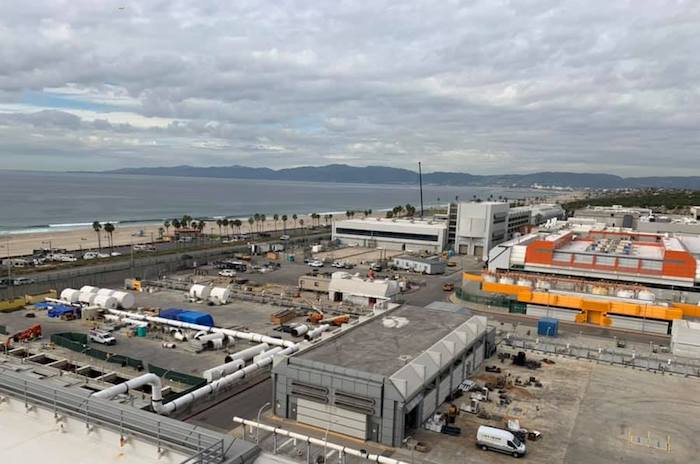Hyperion Water Reclamation Plant still not operating at full efficiency following July spill
By Sam Catanzaro
Three weeks after a 17 million gallon sewage spill at Hyperion Water Reclamation Plant, the facility is still not able to fully treat sewage, sending millions of gallons of partially treated discharge into Santa Monica Bay every day.
Normally, treated sewage at the plant, which serves the City of Los Angeles, is discharged five-miles offshore. During the July 11-12 spill–caused by overwhelming quantities of debris–17 million gallons of raw sewage were discharged one-mile offshore during an eight hour period.
The event led to closures of swim areas in the area, including Dockweiler and El Segundo due to elevated levels of bacteria in the water. These closures were lifted on July 16 after the Los Angeles County Department of Public Health (Public Health) stated that water sampling at the impacted swim areas met state standards.
Recent special ocean water sampling conducted by Public Health on July 29, however, determined that beach areas near Hyperion continued to exceed state standards for bacteria in water. These include near the Topsail Street extension storm drain in Venice, Ballona Creek near Dockweiler Tower 40, the Culver Blvd storm drain, Imperial Highway storm drain and the Westchester storm.
Public Health stated in a press release that these advisories are likely due to day-to-day fluctuations in bacteria levels and that the increases are likely not related to the July 11-12 sewage spill.
“Note that no untreated sewage is currently being discharged into the ocean and ocean waters bacterial levels often fluctuate from day to day and can be impacted by recent rain events,” Public Health wrote.”These advisories are very likely due to day-to-day fluctuations in ocean water bacteria levels. At this time, there is no reason to suspect these increases in beach water bacteria are due to the recent sewage discharge at Hyperion.”
A July 30 article from the Los Angeles Times, however, reports that since the spill the facility has violated multiple water pollution limits. The article states that LA Sanitation & Environment (LASAN) officials confirmed that the plant has surpassed levels for solid wastewater particles and water clarity. A spokesperson for LASAN told the Times that these violations were due to the July 11-21 flood.
“Hyperion had 11 years of compliance with effluent discharge permit limits prior to the July 11, 2021, flooding incident,” spokeswoman Elena Stern told the Times . “Hyperion expects to return to its exemplary compliance record with effluent discharge limits in the near future.”
When reached for comment, Stern told the Santa Monica Mirror that the plant is not operating at 100 percent efficiency.
“There is zero untreated sewage being discharged into the ocean, nor has there been since July 12. Given the repairs needed at the plant and the recovery phase that continues, we are currently not operating at 100% efficiency, but the water is being treated and released through the five mile outfall,” Stern said. “On an average day, we treat and release approximately 260 million gallons of treated water through that five mile outfall.”
Local environmental group Heal the Bay released a statement critical of LASAN’s actions following the LA Times report.
“It’s been over two weeks since the 17 million gallon sewage spill, and we are now learning that the Hyperion plant is not able to fully treat sewage,” Heal the Bay said. “The discharge contains bacteria and viruses as well as organic matter that causes low oxygen levels in ocean waters – the impacts on human health and marine life can be significant and very damaging. LASAN should have notified the public and stakeholders who have been tracking the spill results closely for the last two weeks.”
According to Heal the Bay, on July 29 the organization received a notice from the LA Regional Water Quality Control Board issuing an order to LASAN to provide monitoring and reporting related to the discharge of sewage on July 11 and 12.
“The order details how the flooding at the plant led to non-operational equipment resulting in reduced efficiency of treatment and a reduction in the quality of the discharge from the 5 mile outfall. The order documents that since the initial incident, Hyperion has violated its discharge permit by releasing effluent that is in exceedance of limits for parameters including total suspended solids (TSS), biochemical oxygen demand (BOD), turbidity, and settleable solids,” Heal the Bay said. “These exceedances will result in fines – however, they could have negative impacts on human health and the marine environment. We are glad to see that the Regional Board is requiring daily offshore monitoring and submission of daily monitoring and status reports.”
In addition to the AA Regional Water Quality Control Board actions, the LA County Board of Supervisors has requested a full investigation within 30 days of July 29.













